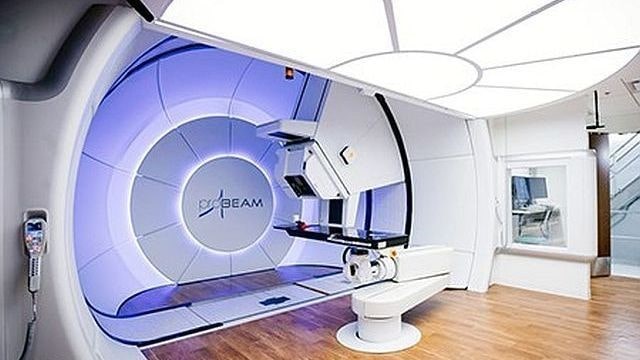What is Proton Therapy?
Radiation used for cancer treatment can be divided into 2 major types:
- Photon radiation (x-rays and gamma rays) and
- Particle radiation (such as protons, neutrons, carbon ion beam, alpha particles and beta particles)
We are pleased to introduce proton therapy which is a newer type of radiation therapy that uses energy from positively charged particles called protons. A machine called a cyclotron speeds up the protons, which are then directed precisely at the tumor. After protons reach the desired place in the body, they deposit the specified radiation dose in the tumor.
How it will benefit patients?
With this technology, there is less radiation dose outside of the tumor. In regular radiation therapy, x-rays continue to give radiation doses as they leave the person’s body. This means that radiation damages nearby healthy tissues, possibly causing side effects. It may be used in conjunction with other treatments, such as surgery and chemotherapy.

Difference between traditional radiation therapy and proton therapy. Credit: DailyTelegraph
How can proton therapy be beneficial for patients?
- Minimizes radiation exposure of healthy tissues
- Potential to reduce the risk of secondary cancers
- Potential to reduce the risk of secondary cancers
- May improve the quality of life during and after treatment
- A retreatment option for recurrent disease
- For challenging conditions where conventional radiotherapy has reached its limits
Proton therapy is used to treat:
- Brain tumors
- Breast cancer
- Cancer in children
- Eye melanoma
- Esophageal cancer
- Head and neck cancers
- Liver cancer
- Lung Cancer
- Pituitary glad tumors
- Prostate cancer
- Sarcoma
- Tumors affecting the spine
- Tumors in the base of the skull
The state-of-the-art radiation treatment – Varian Probeam360֯ Proton Therapy will be soon available in Singapore. Please visit proton.sg for the latest developments.








